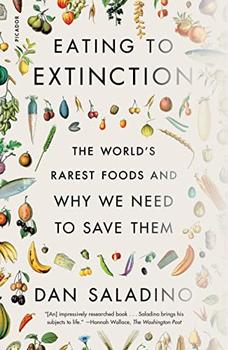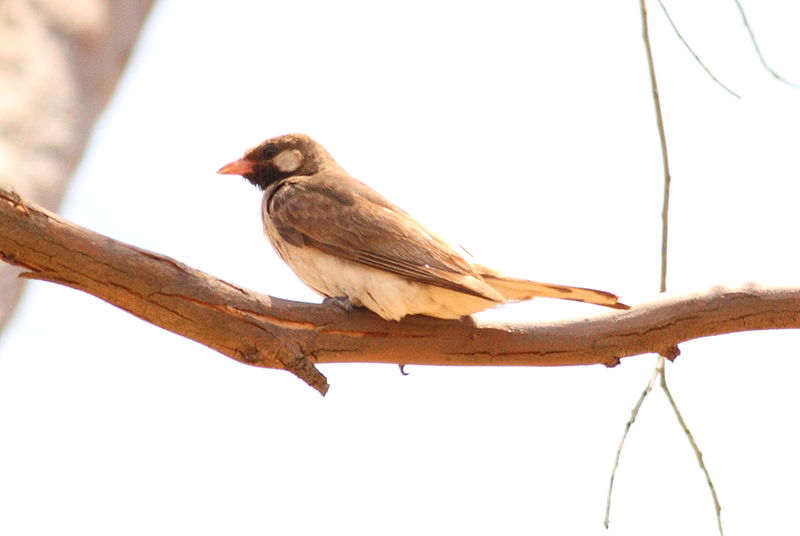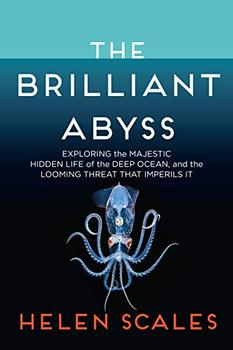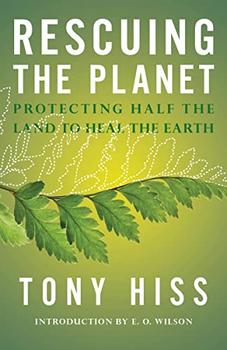Summary | Excerpt | Reviews | Beyond the book | Read-Alikes | Genres & Themes | Author Bio

The World's Rarest Foods and Why We Need to Save Them
by Dan SaladinoDan Saladino's Eating to Extinction is the prominent broadcaster's pathbreaking tour of the world's vanishing foods and his argument for why they matter now more than ever.
Over the past several decades, globalization has homogenized what we eat, and done so ruthlessly. The numbers are stark: Of the roughly six thousand different plants once consumed by human beings, only nine remain major staples today. Just three of these―rice, wheat, and corn―now provide fifty percent of all our calories. Dig deeper and the trends are more worrisome still:
The source of much of the world's food―seeds―is mostly in the control of just four corporations. Ninety-five percent of milk consumed in the United States comes from a single breed of cow. Half of all the world's cheese is made with bacteria or enzymes made by one company. And one in four beers drunk around the world is the product of one brewer.
If it strikes you that everything is starting to taste the same wherever you are in the world, you're by no means alone. This matters: when we lose diversity and foods become endangered, we not only risk the loss of traditional foodways, but also of flavors, smells, and textures that may never be experienced again. And the consolidation of our food has other steep costs, including a lack of resilience in the face of climate change, pests, and parasites. Our food monoculture is a threat to our health―and to the planet.
In Eating to Extinction, the distinguished BBC food journalist Dan Saladino travels the world to experience and document our most at-risk foods before it's too late. He tells the fascinating stories of the people who continue to cultivate, forage, hunt, cook, and consume what the rest of us have forgotten or didn't even know existed. Take honey―not the familiar product sold in plastic bottles, but the wild honey gathered by the Hadza people of East Africa, whose diet consists of eight hundred different plants and animals and who communicate with birds in order to locate bees' nests. Or consider murnong―once the staple food of Aboriginal Australians, this small root vegetable with the sweet taste of coconut is undergoing a revival after nearly being driven to extinction. And in Sierra Leone, there are just a few surviving stenophylla trees, a plant species now considered crucial to the future of coffee.
From an Indigenous American chef refining precolonial recipes to farmers tending Geechee red peas on the Sea Islands of Georgia, the individuals profiled in Eating to Extinction are essential guides to treasured foods that have endured in the face of rampant sameness and standardization. They also provide a roadmap to a food system that is healthier, more robust, and, above all, richer in flavor and meaning.
The book is written in easy-to-understand language, and readers will finish every chapter feeling they have learned something new and valuable in an almost effortless way. What, exactly, they will learn are the histories and stories of diverse and important foods that are in danger of never being tasted again. Hopefully, with the help of Saladino's efforts, more attention will be brought to the issue of food extinction. While he offers no simple solutions, the information he provides, coupled with his brilliant storytelling, will no doubt leave readers considering the impacts of government policies, warfare, colonization and capitalism on the environment and on the indigenous people and cultures that have inhabited lands across the globe for millennia...continued
Full Review
 (746 words)
(746 words)
(Reviewed by Nichole Brazelton).
 In Dan Saladino's book Eating to Extinction, readers find themselves in the midst of the Hadza people. The Hadza live in northern Tanzania, in camps that average between 20 and 30 individuals.
In Dan Saladino's book Eating to Extinction, readers find themselves in the midst of the Hadza people. The Hadza live in northern Tanzania, in camps that average between 20 and 30 individuals.
The Hadza have been in this region for thousands of years, and they are well-known for their honey harvesting. Making up roughly 15% of their daily caloric intake according to some estimates, the honey of wild bees is a nutritional staple, but it's also a way of life and of honoring tradition for the Hadza. There are seven different types of honey they consume. Hadza women are generally responsible for collecting honey that can be found close to the ground, and Hadza men are charged with hunting the tribe's favorite type of honey, ba'alako. Ba'...

If you liked Eating to Extinction, try these:

by Helen Scales
Published 2022
"The oceans have always shaped human lives," writes marine biologist Helen Scales in her vibrant new book The Brilliant Abyss, but the surface and the very edges have so far mattered the most. "However, one way or another, the future ocean is the deep ocean."

by Tony Hiss
Published 2022
An urgent, resounding call to protect 50 percent of the earth's land by 2050--thereby saving millions of its species--and a candid assessment of the health of our planet and our role in conserving it, from the award-winning author of The Experience of Place and veteran New Yorker staff writer.